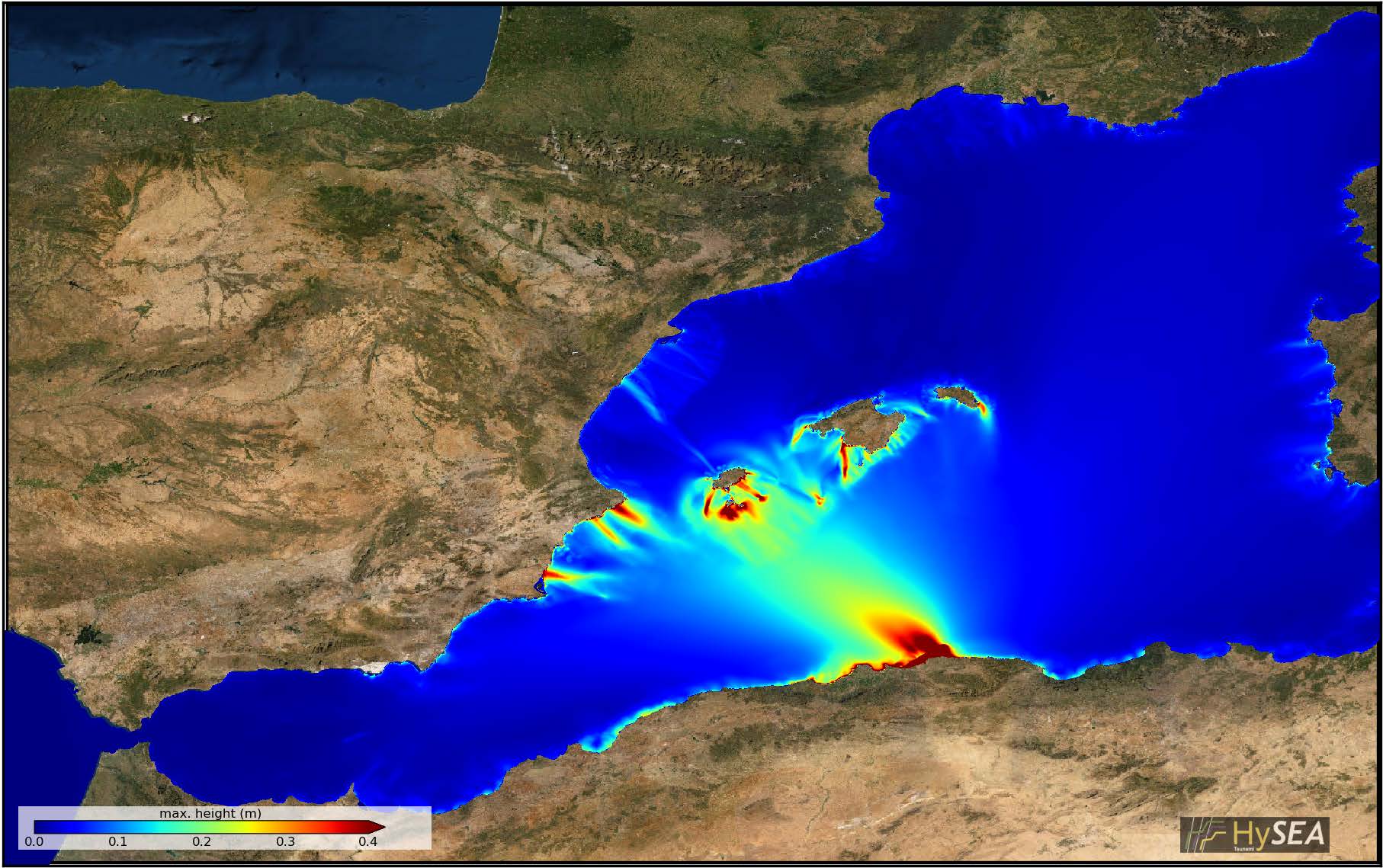T-HySEA (Tsunami-HySEA)
| Code name | T-HySEA (Tsunami-HySEA) |
| Developer(s) | Manuel J. Castro Díaz Jorge Macías Sánchez Marc de la Asunción Contact person: Jorge Macías Sánchez |
| Link | |
| Short description | T-HySEA solves the 2D shallow water equations on hydrostatic and dispersive versions. T-HySEA is based on a high-order Finite Volume (FV) discretization (hydrostatic) with Finite Differences (FD) for the dispersive version on two-way structured nested meshes in spherical coordinates. Initial conditions from the Okada model or initial deformation, synchronous and asynchronous multi-Okada, rectangular and triangular faults. |
| Original code level | 3 |
| Current code level | 8-9 |
| Pilot(s) involved | |
| Main results and References | MAIN RESULTS:
REFERENCES: Macías, J., Castro, M.J., Ortega, S., Escalante, C., González-Vida, J.M. (2017). Performance benchmarking of Tsunami-HySEA model for NTHMP's inundation mapping activities. Pure and Applied Geophysics , 1-37. [doi: 10.1007/s00024-017-1583-1] Macías, J., Castro, M.J., Escalante, C. (2020). Performance assessment of Tsunami-HySEA model for NTHMP tsunami currents benchmarking. Laboratory data. Coastal Engineering, 158, 103667, ISSN 0378-3839, [doi: 10.1016/j.coastaleng.2020.103667].
|
| Performance results |
|

